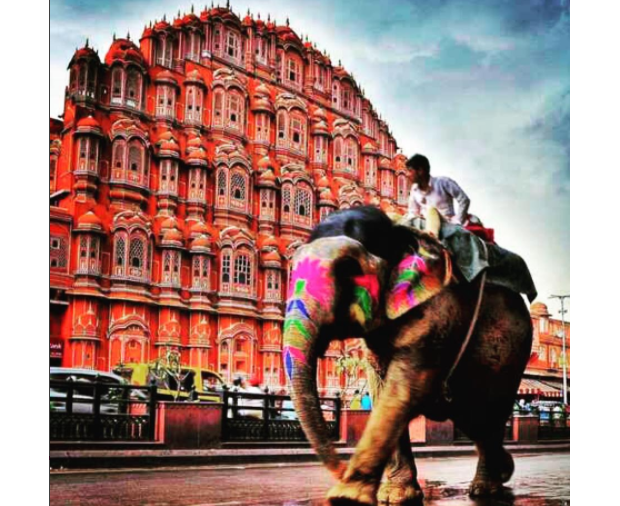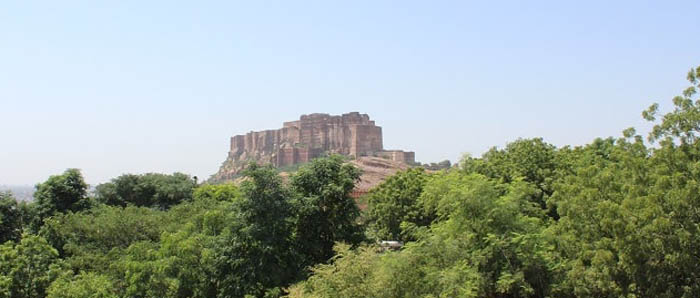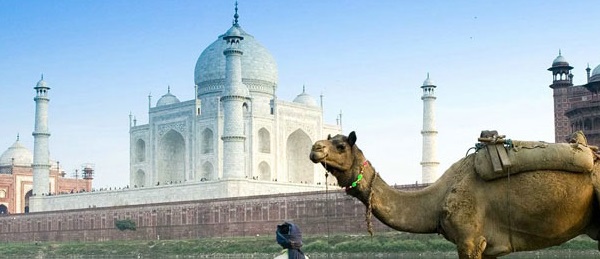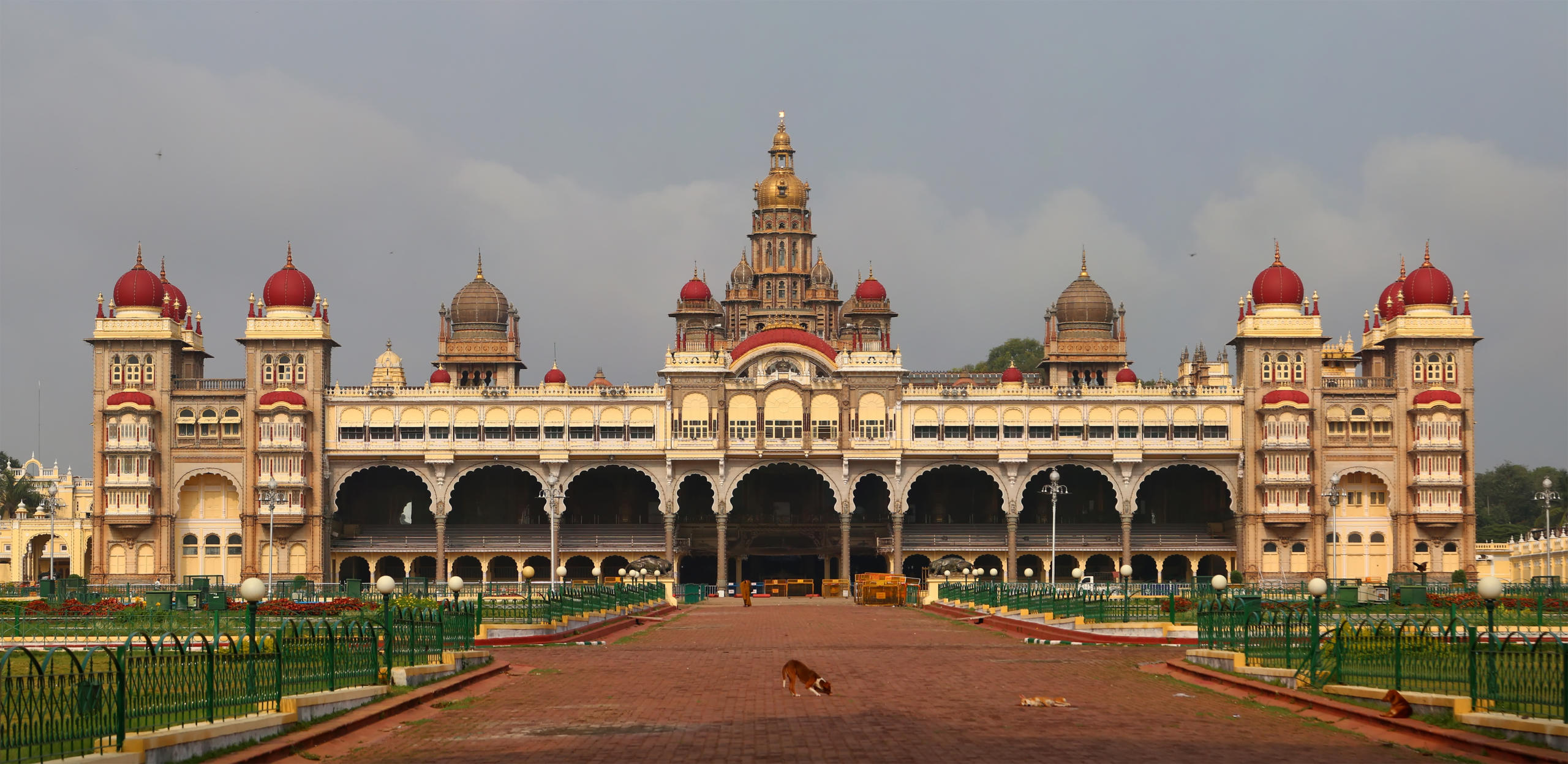Rajasthan – Most Colorful Region In India

Unleash the legacy of the beautiful state of India – Rajasthan. Discover the culture and ethos of Rajasthan as you explore this fascinating land. As an enticing destination in India, Rajasthan is one land that lures tourists from all over the world. Rajasthan is one land that is breathtakingly beautiful. Explore the legacy of Rajasthan as it reflects the richness of living, and conjures up visions of long-lost prosperity and splendor. With Cities like Jaipur, Bikaner, and Jodhpur, Rajasthan is an abode that entices everybody with its exquisite beauty.
Rajasthan is the most colorful region in India exhibiting splendor and royalty in every walk of life. It is truly said “a land of valiance and chivalry,’ which is endowed with invincible forts, magnificent palaces, waves of sand dunes, and serene lakes. The state represents an unusual diversity in all of its forms- its people, culture, customs, costumes, cuisine, dialects, and rustic music.
No other region in the country assembles as many paradoxes of India as does the desert land of Rajasthan. Unexpected forest glens, lakes, and temples appear like mirages in the deserts. On the crag are seen rugged forts, testimony to a turbulent history. Innumerable temples dating back to the 7th century still survive amidst scattered ruins. You can also observe medieval cities existing around turreted marble palaces and spacious gardens.
The princely state of Rajasthan is a land of contrasts – the Thar desert, mountains, man-made and holy lakes, forests and jungles, impregnable fortresses and magnificent palaces, warrior kings and princes, saints and mystics, Rajputs and Moghuls. In common with other parts of India, Rajasthan has a wealth of royal residences and stately homes in the form of palaces (great and small), forts, hunting lodges, and large estates. It has become increasingly difficult in this modern age to maintain large and historic properties without seeking additional sources of income.
In Britain whilst many of the owners of stately homes have resorted to opening them to the general public in India, where the properties tend to have many bedrooms, their most appropriate use has been to convert them into hotels. Some of the larger palaces adopted this innovative idea a number of years ago and are firmly established in travel itineraries; in some cases owned or managed by international hotel chains.

Fast Facts:
-
Area: 342,239 sq km
-
Capital: Jaipur
-
Languages: Hindi and Rajasthani
-
Religion: Hindu (88.49%), Islam (9.07%), Jainism (.91%), Sikh(1.27%), Christian (.14%), and others
-
Literacy rate: 66.11%
-
Best time to visit: November to February
-
State Emblem: Uses the National Emblem of India

-
State Animal: Chinkara (Gazella bennettii)
-
State heritage animal: Dromedary camel (Camelus dromedarius)
-
State Bird: Indian bustard (Ardeotis nigriceps)
-
State Tree: Khejri (Prosopis cineraria)
-
State Flower: Rohida (Tecomella undulata)
-
State plant: cactus (cactaceae)
- Culture and Tradition of Rajasthan
Tourist Attractions :
Forts and Palaces of Rajasthan :
Mehrangarh Fort

Perched on a 150 m high hill its sprawl is the most formidable and magnificent fort in Rajasthan. Rao Jodha founded it in 1459 but subsequent rulers of Jodhpur have also added to it over the centuries.
Lalgarh Palaces
During the reign of Maharaja Ganga Singh, the first phase of Lallgarh Palace was completed in the year 1902. It was the most completely integrated example of Indo-Saracenic architecture and the perfectly realized creation of Sir Samuel Swinton Jacob. Further additions were done between 1906 – 1910. In the year 1972 Dr. Karni Singh established the Ganga Singhji Charitable Trust.
He endowed a part of Lallgarh Palace to be used in service of the trust. The other parts were converted into a hotel. All the income from the hotel was to be used for Academic Scholarships, Marriages of girls from poor families, Old Age Pensions, and the maintenance of ancient Sanskrit manuscripts. Lallgarh Palace Hotel has got a total of 38 rooms with an attached bath. It is a genuinely extraordinary palace and is a magnificent place to visit. The hotel is today managed by ITC Welcomgroup Hotels.
Junagarh Fort
One of the most imposing forts of Northern India– Junagarh Fort has remained unconquered to date. This fort was built in the 15th century by one of the ablest and most trusted generals of Akbar, Raja Rai Singh.
Bissau Palace
Bissau Palace is an elegant traditional hotel built in 1919 and recently renovated. It is close to the walled city and overlooks the Tiger fort. The Bissau offers an oasis of calm, care, comfort, and respite from the heat and dust of the city. The guest rooms are spacious and comfortable. A gracious hotel with old-world charm and a reputation for excellent cuisine and service.
Jaisalmer Fort
Known as SONAR QUILA, rising from the sand, the mega structure merges with the golden hues of the desert ambiance, and the setting suns in its most colorful shades give it a fairytale look.
Samode Haveli
Samode Haveli stands in the heart of the sprawling walled city of Jaipur, suffused with an atmosphere of quiet beauty. Once a royal residence, the Haveli has now been converted into a hotel and stands today as a reminder of a halcyon past, offering moments of subtle luxury.
The spirit of Rajasthan’s history and legend, colored by chivalry and romance, finds expression in Jaipur. The built-in pink stone, more than two centuries ago, by Maharaja Jai Singh II, the Capital is a testimony to the skill of master craftsmen. Samode Haveli was built by Rawal Sheo Singhji, a Prime Minister in the Jaipur court, who belonged to the family of Samode – a lineage dating back more than four centuries to the illustrious Prithviraj Singhji of Amber, seventeenth Prince of the house of Kacchawaha Rajputs.
Taragarh Fort
It was built in 1345 and is a great ramble around at leisure. This is rather a ramshackle fort, with its overgrown vegetation.
The Samode Palace
The Samode Palace has been meticulously restored offering a retreat into an aesthetically beautiful environment where visitors can enjoy India’s natural beauty and rich history.
Fort Chittorgarh

A standing sentinel to the courage and valor of Chittorgarh, it stands tall over a 180-meter high hillock covering a massive area of 700 acres.
The Sariska Palace
Sariska Palace was built as a hunting lodge at the close of the 19th century by Maharaja Sawai Jai Singh of Alwar in a calm, quiet, and thickly wooded valley on the threshold of what is now the Sariska national park. the palace is a brilliant jewel set in nature in all it’s natural magnificence and is much admired by all discerning visitors for its architectural grandeur and natural surroundings
Lohagarh Fort, Bharatpur
Lohagarh Fort or the Iron fort was built in the early 18th century and took its name from its supposedly impregnable defenses, which are said to be inspired by a description given in the epic, Ramayana.
Wildlife of Rajasthan :

Rajasthan is a haven for a wide spectrum of wildlife. The topography of Rajasthan ranges from the barren desert, scrub-thorn arid forests, rocks, and ravines to wetland and lush, green forests. And each of these areas houses a large variety of animal and birdlife. Some of them are rare while some are endangered.
Rajasthan is the home of the tigers, blackbucks, chinkara, the rare desert fox, the endangered coracial, the great Indian bustard, gavial, monitor lizard, wild boars, porcupine. Migratory birds like the common crane, ducks, coots, pelican and the rare Siberian cranes, imperial sand grouse, falcons, and buzzards flock to this state during the winter months. Typical areas representing each of the ecosystems have been earmarked as special areas for wildlife. Rajasthan boasts of two National Parks, over a dozen Sanctuaries, and two Closed Areas. Most of these areas are open to visitors around the year but are closed briefly during the monsoon.
Keoladeo Ghana National Park
Keoladeo Ghana National Park, popularly known as Bharatpur is India’s best-known bird sanctuary. This 28.7 square kilometers of mixed wetland, woodland, grass, and scrub is home to 400 plus species of birds. Only 175 km from New Delhi, Bharatpur is on the Agra – Jaipur road and a pleasant 3-hour drive from the capital. Keoladeo is both a Ramsar and World Heritage site.
If you are new to birding or you are visiting India for birding, Bharatpur should certainly be at the heart of your plans. With its paved walkways, trained cycle-rickshaw pulling guides, cycling tracks, and, best of all, an abundance of easy-to-approach birds ~ Bharatpur is geared for birding like few places in the world. A day’s birding can throw up 150 + species and I had 152 species on a very crowded day in January 2004. Keoladeo has been famous for the last visiting pair of the western race of the Siberian Crane.
Unfortunately, the pair did not winter in Bharatpur for two years in succession ( 2003 & 2004) and it is likely that this species is now extinct in India.
Ranthambore National Park
Ranthambhore National park is one of the prime examples of Project Tiger’s conservation efforts in Rajasthan. The park itself covers some 400 sq. km and its scenery is very beautiful. A system of lakes and rivers is hemmed in by steep high crags and, on top of one of these, is the extensive and well-preserved fortress of Ranthambhor, built in the 10th century. The lower-lying ground alternates between open bushland and fairly dense forest and are peppered with ruined pavilions, chhatris (tombs), and ‘hides’ – the area was formerly a hunting preserve of the maharajas.
Wildlife found here are tiger, panther, hyaena, jackal, sambar, chital & nilgai.
A good network of gravel tracks crisscrosses the park and safaris are undertaken in open-sided jeeps driven by a ranger. The best time to visit the park is between October & April. The park is closed from 01 June to 01 Oct.
Sariska Tiger Reserve
Nestled amidst the Aravali, Sariska sprawls over 800 sq. km. of dry tropical forests both dry deciduous and thorn forests. ‘Dhok‘ is the principal tree species that covers 90% of the entire area. There is a diversity of grasses and shrubs in the valleys and plateaus. The core area of the Park is 492 sq. km. and there are three distinct and separate core zones that are not contiguous and result in some management problems.
The area has an ancient history going back to the Gupta period and the remnants of 18 ancient temples are still found. Myth and legend reveal the presence of the Pandwas.
The reserve supports over 100 species of avifauna and has the largest population of peafowl in the entire country. Leopards, Caracals, Sambar, Nilgai, Chital, and Wild boar are also found here. A rare feature of the fauna is the four-horned antelope. The reserve’s buffer is still awaiting final notification and only one core zone has been notified.
Water is a limiting factor in this reserve and plans are underway to create artificial water holes, anicuts, etc to resolve the problem.
The protection of the Park staff is yet to be effective to control poaching since firearms have not been provided. The last case of tiger skin being seized was in 1988-89. Poachers have shot leopards and other animals and an ever-vigilant forest staff is required to deal with this threat.
Jaisalmer

Jaisalmer is a great place to simply wander. The old city was once completely surrounded by an extensive wall, much of which has sadly been ripped away in recent times for building material. Some of it remains, however, including the city gates and, inside them, the massive fort which rises above the city and is the essence of Jaisalmer. The main market area is directly below the hill, while the banks, the new palace, and several other shops and offices are near the Amar Sagar Gate to the west.
Bikaner
Bikaner, situated in the northern part of Rajasthan, was founded in 1488 by a descendant of the founder of Jodhpur named Rao Bhikaji. Bikaner was an important city on the great caravan trade route during the medieval period. The city is surrounded by high fortifications comprising a seven-kilometer-long wall that encircles the old city and has five entrances-all constructed in the 18th century.
Bikaner offers several attractions to the tourists besides, of course, the exotic camel safaris. You can visit the majestic forts or go to the Mata Karni temple where rats are considered sacred and worshipped. The camel festival held in the month of January is also an event worth witnessing. Some of the major attractions around the city are Junagarh Fort, Lalgarh Palace, Camel Breeding Farm, Gajner Palace, Deshnoke Temple, and Ganga Golden Jubilee Museum
Kota
Kota, also Kotah, city, northern India, in Rajasthan State, on the Chambal River. The city is a trade center for an area in which cotton, millet, wheat, and oilseeds are grown; industries include cotton and oilseed milling, textile weaving, distilling, dairying, and the manufacture of metal handicrafts. The rail junction, a road hub, lies 4.8 km (3 mi) to the north. The Crosthwaite Institute is located in Kota, as are the old and new palaces of the maharao (the Maharaja). The city was formerly the capital of the princely state of Kota, formed in 1572.
Jodhpur

Rising majestically over the rocky and rugged terrain is one of Rajasthan’s finest forts-the Mehrangarh Fort. It looks down protectively over the fascinating city of Jodhpur.
Famous for its magnificent forts and palaces, Jodhpur is the second-largest city of Rajasthan and a major tourist attraction in the country. The city is situated at the edge of the Thar Desert with Jaisalmer on its west, Barmar, Jalor, and Pali on its south, Bikaner on its north, and Nagaur on the eastern side.
Jodhpur was founded by the Rajput chief Rao Jodha in 1459. The city was the erstwhile capital of the Marwar state. A 10-km-long wall made of stone and built about a century after the city was founded, surrounds the old city. There are about 100 towers in the city, most of which are surrounded by defensive battlements.
Ajmer
Ajmer was founded by Raja Ajay Pal Chauhan and it is situated in a green oasis wrapped in barren hills. Ajmer used to be a major center of the Chauhan power till 1193 A.D. when the Ruler Prithviraj Chauhan lost it to Mohammed Ghauri. After Prithviraj Chauhan Ajmer witnessed dynasties, which came and left leaving behind indelible marks of their culture and traditions on the city’s history, converting it into an amalgam of various cultures and a blend of Hinduism and Islam.
Today, Ajmer is one of the most significant pilgrimage destinations equally important for Hindus as well as Muslims. Especially famous is the Dargah Sharif tomb of the Sufi saint Khwaja Moinuddin Chisti.
Ajmer is very close to Pushkar (11 km) which is significant for the famous fair held normally in the month of October/November. Pushkar, the abode of Lord Brahma, lying to its west with a temple and a picturesque lake. The Pushkar lake is a sacred spot for Hindus. During the month of Kartik (Oct./Nov.), devotees throng in large numbers here to take a dip in the sacred lake.
Fairs and Festivals :

The Rajasthani’s love for color and joyous celebrations is proved by the elaborate rituals and the gay abandon with which he surrenders himself to the numerous fairs and festivals of the region. In addition to the festivals celebrated by the Hindus, Muslims, and others, there are also traditional fairs.
There are animal fairs, there are religious fairs and there are fairs to mark the changing seasons. In fact, celebrations occur almost round the year and are a splendid opportunity for the visitor to gain an insight into the life of the Rajasthani. Other than the traditional fairs, recently established festivals that involve elephants, camel races, dance, and music have been specially organized for the tourists.
Desert Festivals
An extravaganza of color, music, and festivity, is held every year during the Hindu month of Magh (February). It has, on display, some of the most fondly preserved components of Rajasthan’s rich culture. Add to this the warmth and cheerfulness of the people of Rajasthan who welcome the tourists from the depths of their hearts. The excitement heightens as the Maru-Shri (Mr. Desert) Competition and the turban-tying competition gets underway. In the turban-tying competition and tug of war, Indians compete with foreigners which adds to the fun of the festival. An interesting event of the festival is the Moustache Competition. In this competition, the prize is given to the man with the longest mustache.
Nagaur Fair
This eight days fair held every year during the month of Jan-Feb is popularly known as the Cattle fair and is the second largest in Rajasthan. Nagaur Town is the most picturesque of Rajput townships. Nagaur is a sea of animals, trading over 70,000 bullocks, camels, and horses every year. The bullocks are known for their fleetness. Not only are the animals lavishly decorated, but even their owners also flaunt wearing colorful turbans and long mustaches.
Shearing sheep, handsome Marwari horses to spices all compiled in one fair. Attractions include the Mirchi Bazaar (the largest red-chilly market in India), wooden items, iron crafts, and camel leather accessories.
Sports like tug-of-war, camel races, bullock races, and cockfights; jugglers; puppeteers, story-tellers; and exciting campfire evenings are held to entertain the tourists. Folk music of the Jodhpur variation echoes the tranquil desert sand. Nagaur is well connected to the major cities by road and rail. The nearest airport is Jodhpur, some 135kms away.
Gangaur Festival
Gangaur Festival, a spirited celebration gets underway every year during the Hindu month of Chaitra (March – April) in Jaipur – A city of pomp and pageantry. Gangaur Festival marks the end of winter and the coming of spring. Mists fade away and the sun shines brightly through a clear blue sky. Trees sprout forth new leaves and buds. It is a time to rejoice and celebrate
A traditional procession commences from the Zanani-Deorhi of the City Palace, passes through Tripolia Bazaar, Gangauri Bazaar, Chaughan, and finally converges near the Talkatora with the image of the deity being immersed in the lake. The procession is headed by a colorful pageantry of elephants, camels, horses, musicians, old palanquins, chariots, and bullock carts.
The Mewar Festivals
The Mewar Festival in March – April is the ceremonial welcome to spring and is dedicated to the goddess Parvati. A procession of colorfully attired women, carrying images of the goddess to the Gangaur Ghat of Lake Pichola is the major highlight. Songs, dances, and firework displays mark the festivities.
Getting There :
Rajasthan is located 259 km from Delhi, 405 km from Udaipur, 336 km from Jodhpur, and 657 km from Ahmedabad.
- By Air: Rajasthan is directly linked to Delhi, Kota, Jodhpur, Udaipur, Aurangabad, Mumbai, and Ahmedabad by Indian Airlines and Jet Airways. The major international airport is at Jaipur-Sanganer airport connecting to Dubai and some places in the UK.
- By Rail: Connected from Delhi by A/c Shatabdi Express. Other connections are from Ahmedabad, Secunderabad, Agra, Lucknow, Mumbai, and Calcutta.
- By Road: Rajasthan roadways run excellent regular service of A/c and Deluxe coaches from Delhi.
Suggested Read: Formation Dates of Indian States







